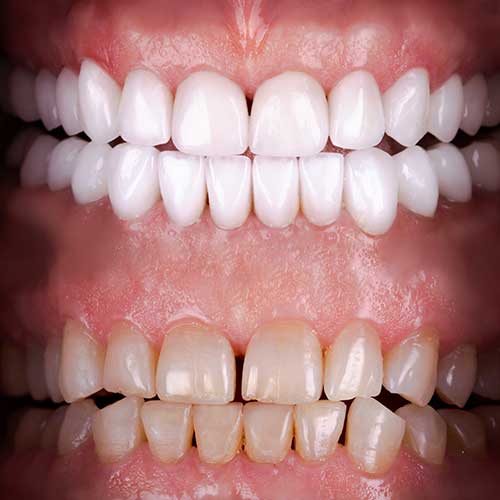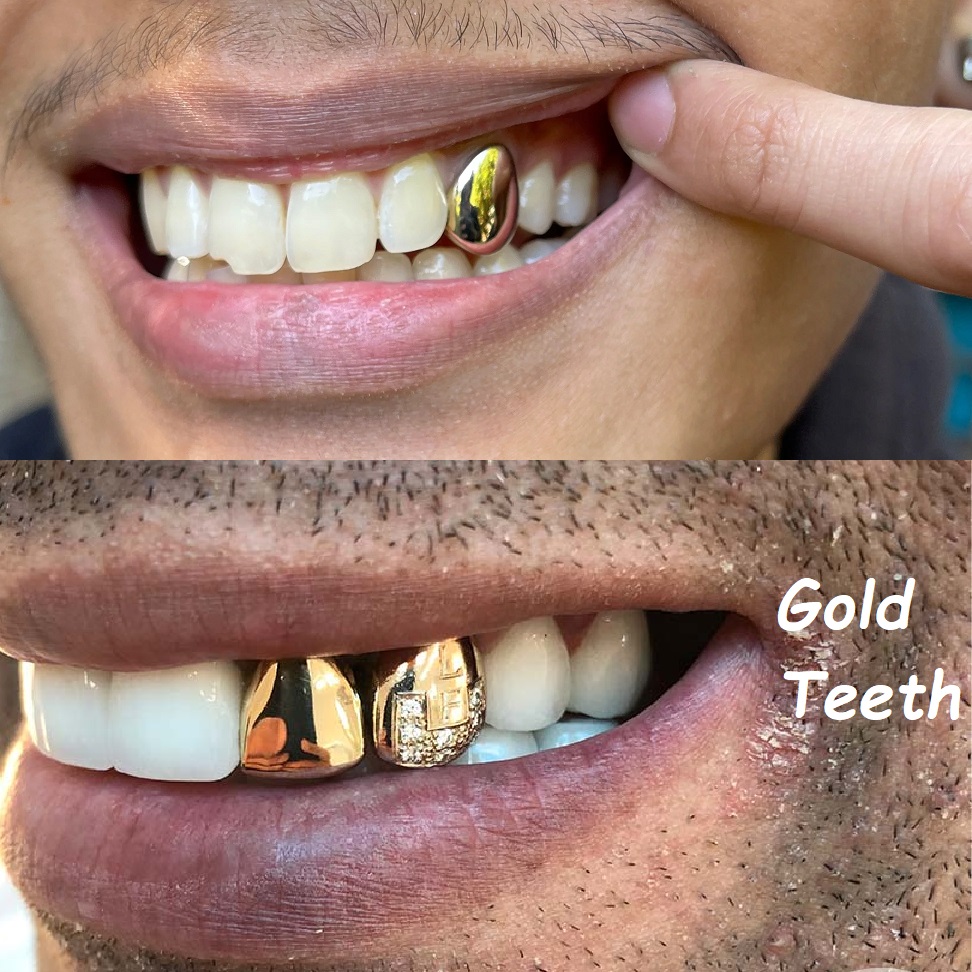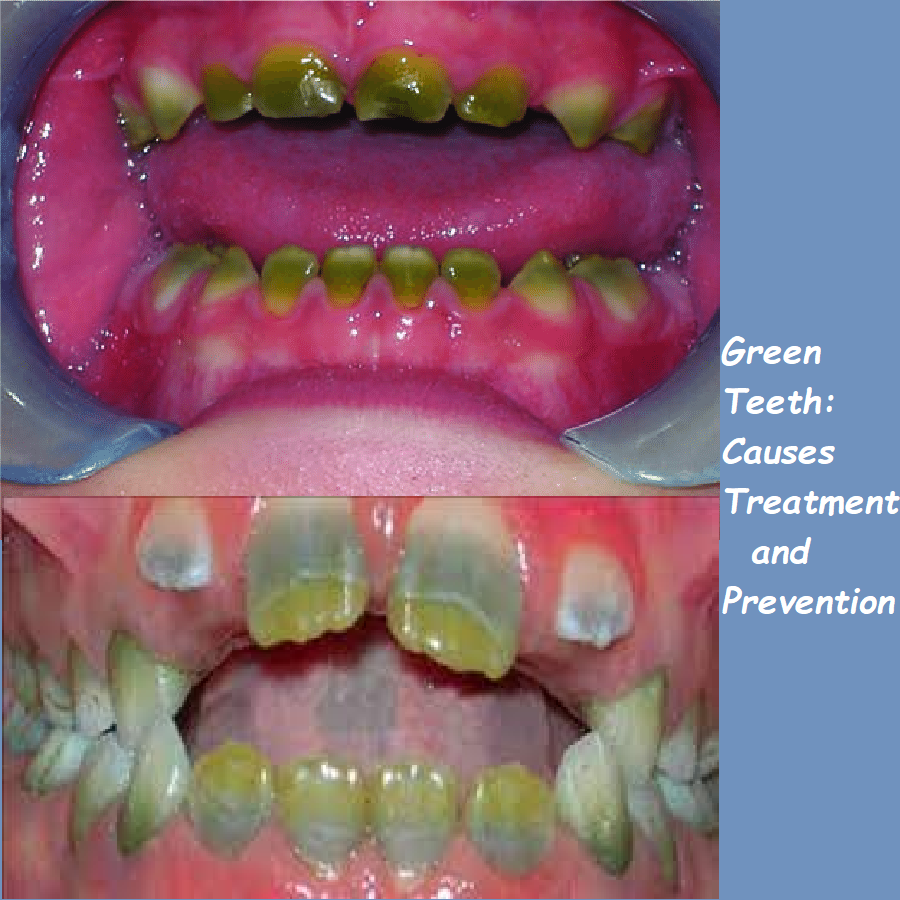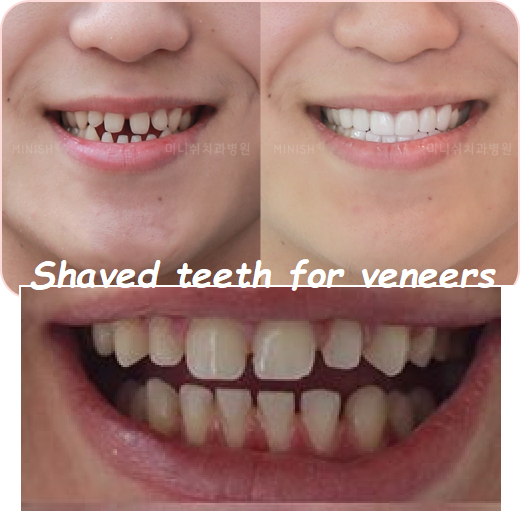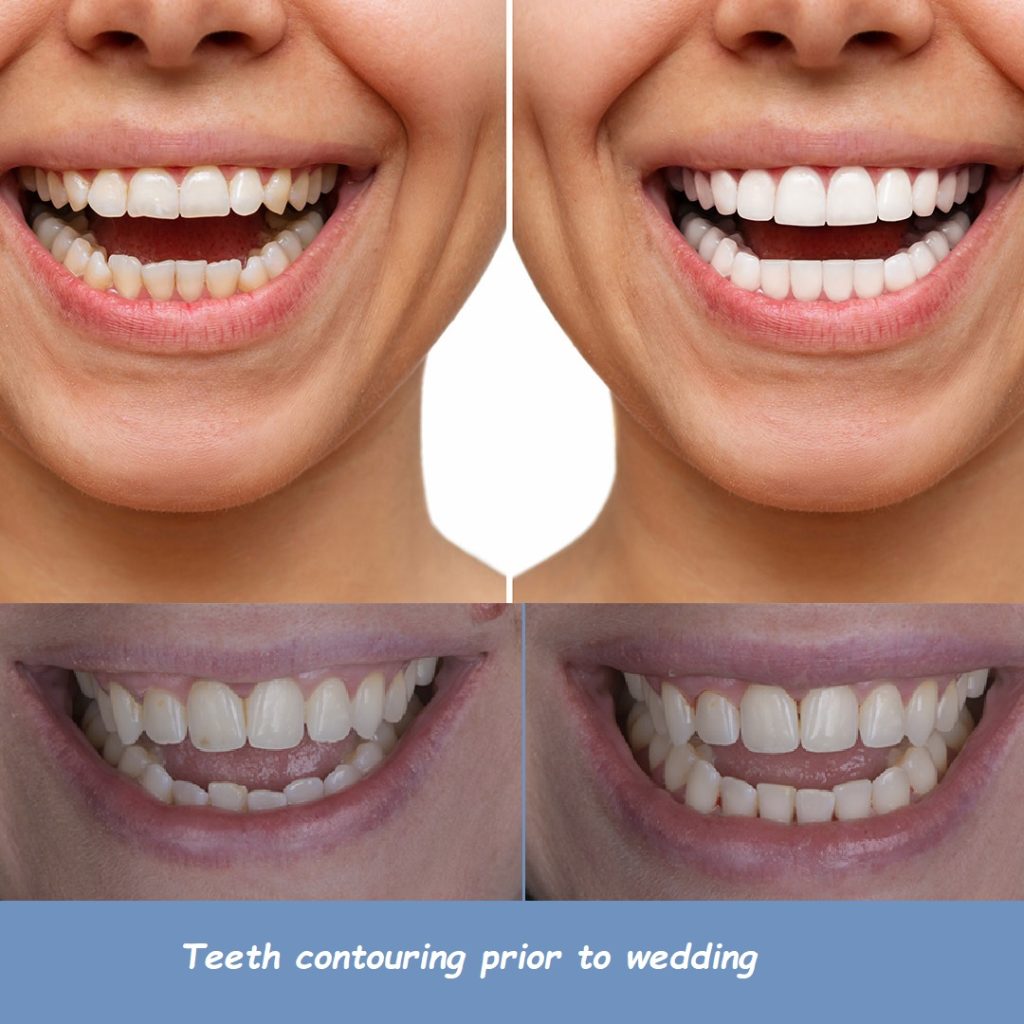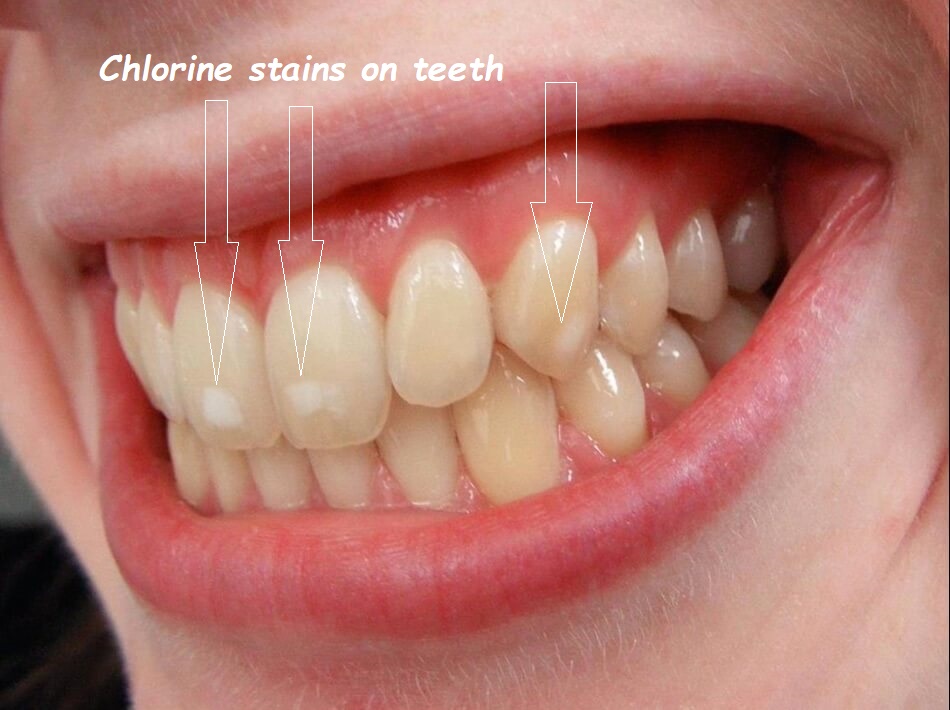composite veneers vs porcelain veneers

Composite Veneers vs Porcelain Veneers: A Detailed Comparison
When it comes to enhancing the aesthetics of a smile, dental veneers have become one of the most popular choices. Among the various types available, composite veneers and porcelain veneers are the most commonly sought-after options. Each type has its own set of advantages and drawbacks, making the decision between composite veneers vs porcelain veneers an important one for patients and dentists alike. This comprehensive guide aims to provide a detailed comparison of composite veneers vs porcelain veneers, helping you make an informed decision that suits your specific needs.
What Are Dental Veneers?
Dental veneers are thin shells that are custom-made to cover the front surface of teeth. They are designed to improve the appearance of teeth that are discolored, worn down, chipped, misaligned, or have gaps between them. Veneers can be made from either composite resin or porcelain, each offering unique benefits and characteristics.
Composite Veneers
Definition and Composition
Composite veneers are made from a tooth-colored resin, which is a blend of glass and plastic. This material is applied directly to the teeth and then sculpted to achieve the desired shape and size. Once the desired shape is achieved, the resin is hardened using a special light.
Procedure
- Consultation and Planning: The process begins with a thorough consultation and examination. The dentist will discuss your goals and examine your teeth to determine if composite veneers are the right solution for you.
- Preparation: The dentist may need to remove a small amount of enamel from the surface of the teeth to ensure a proper fit and adhesion of the veneers. This preparation is minimal compared to porcelain veneers.
- Application: The composite resin is applied in layers directly to the tooth surface. Each layer is shaped and hardened with a curing light before the next one is added. This process allows the dentist to build up the veneer to the desired shape and thickness.
- Finishing and Polishing: Once the final layer is applied, the dentist will shape and polish the veneer to give it a natural appearance. This includes smoothing out any rough edges and ensuring the veneer blends seamlessly with the surrounding teeth.
Advantages
- Cost-Effective: Composite veneers are generally less expensive than porcelain veneers, making them a more accessible option for many patients.
- Less Invasive: The preparation required for composite veneers is minimal, often involving little to no removal of the tooth enamel.
- Quick Procedure: The application of composite veneers can typically be completed in a single visit, making it a convenient option for those with busy schedules.
- Reparability: If a composite veneer gets damaged, it can often be repaired without needing to replace the entire veneer.
Disadvantages
- Durability: Composite veneers are less durable than porcelain veneers and are more prone to chipping and staining over time.
- Aesthetic Quality: While composite veneers can look very natural, they generally do not achieve the same level of translucency and shine as porcelain veneers.
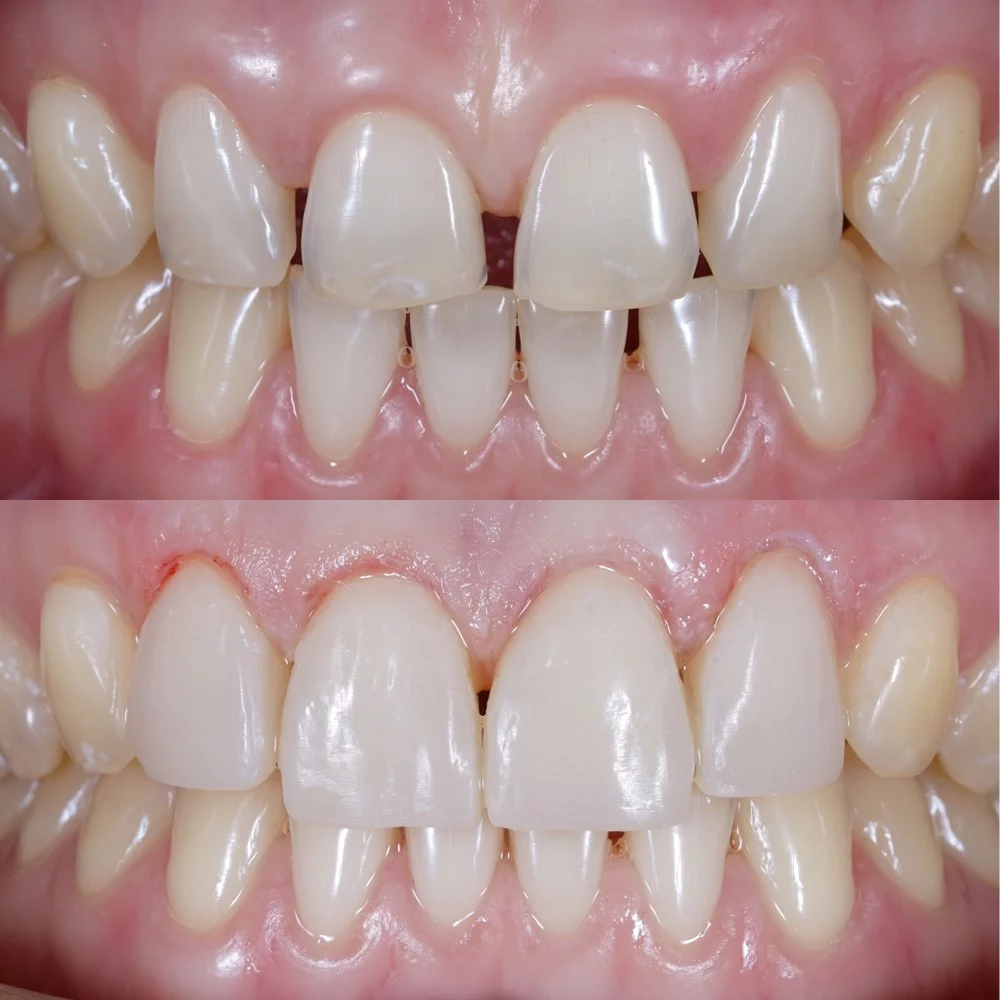
Porcelain Veneers
Definition and Composition
Porcelain veneers are thin shells made from high-quality dental ceramic. These veneers are custom-crafted in a dental laboratory to match the shape, size, and color of the patient’s teeth.
Procedure
- Consultation and Planning: Similar to composite veneers, the process starts with a detailed consultation and examination. The dentist will take impressions of your teeth and may use digital imaging to plan the final look.
- Preparation: A small amount of enamel, typically less than a millimeter, is removed from the surface of the teeth. This is to ensure that the veneers fit properly and look natural. Temporary veneers may be placed while the permanent ones are being made.
- Fabrication: The impressions are sent to a dental lab where the porcelain veneers are custom-made. This process can take a few weeks.
- Bonding: Once the veneers are ready, the dentist will check their fit and color before permanently bonding them to the teeth. A special cement is used to attach the veneers, and a curing light hardens the cement.
- Finishing Touches: After the veneers are bonded, the dentist will make any necessary adjustments and polish them to ensure a perfect fit and natural appearance.
Advantages
- Aesthetic Excellence: Porcelain veneers are renowned for their natural look and ability to mimic the light-reflecting properties of natural teeth. They offer superior translucency and a high-gloss finish.
- Durability: Porcelain is a very strong material that resists chipping and staining. With proper care, porcelain veneers can last 10-15 years or more.
- Stain Resistance: Unlike composite resin, porcelain is highly resistant to stains from coffee, tea, wine, and other substances.
Disadvantages
- Cost: Porcelain veneers are more expensive than composite veneers due to the material cost and the lab work involved.
- Invasiveness: The process of preparing the teeth for porcelain veneers is more invasive, requiring the removal of more enamel.
- Time-Consuming: The process of getting porcelain veneers typically takes multiple visits and several weeks to complete.
Composite Veneers vs Porcelain Veneers: A Comparative Analysis
Aesthetics
When comparing the aesthetic outcomes of composite veneers vs porcelain veneers, porcelain veneers generally have the edge. Porcelain’s translucent quality and its ability to mimic the natural enamel of teeth make it a preferred choice for those seeking the most natural and aesthetically pleasing results. Composite veneers, while also able to provide a natural appearance, may not match the same level of translucency and luster.
Durability and Longevity
Porcelain veneers are significantly more durable than composite veneers. They are resistant to chipping, cracking, and staining, and can last between 10 to 15 years, or even longer with proper care. Composite veneers, on the other hand, typically last between 5 to 7 years. They are more prone to wear and tear and can stain over time, especially if the patient consumes a lot of staining substances like coffee or red wine.
Cost Considerations
Cost is a major factor when deciding between composite veneers vs porcelain veneers. Composite veneers are generally more affordable, making them accessible to a broader range of patients. The lower cost is due to the less expensive material and the fact that the procedure can often be completed in a single visit. Porcelain veneers are more expensive due to the high-quality material and the need for custom fabrication in a dental lab. However, their durability and superior aesthetics can make them a worthwhile investment for many patients.
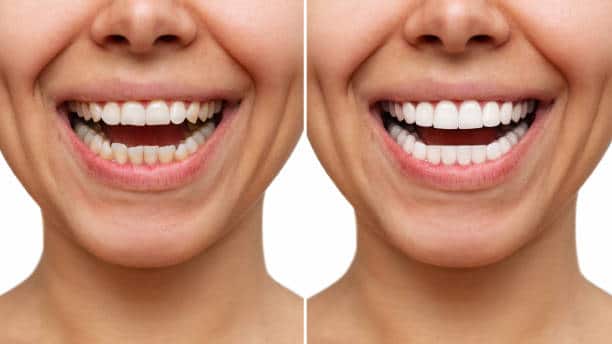
Procedure Time
Composite veneers can usually be applied in a single visit, making them a convenient option for those with busy schedules. Porcelain veneers, on the other hand, require multiple visits and a longer overall treatment time. The initial visit involves preparing the teeth and taking impressions, followed by a waiting period while the veneers are fabricated in a lab, and a final visit to bond the veneers to the teeth.
Minimally Invasive Nature
Composite veneers are less invasive compared to porcelain veneers. They require minimal tooth preparation, often preserving more of the natural tooth structure. This can be a significant advantage for patients who are concerned about the invasiveness of the procedure. Porcelain veneers require the removal of more enamel to ensure a proper fit, which is a more invasive process.
Reparability
If composite veneers become damaged, they can often be repaired directly on the tooth without needing to replace the entire veneer. This makes them a more flexible option in the event of chips or cracks. Porcelain veneers, while more durable, are not easily repaired. If a porcelain veneer is damaged, it typically needs to be replaced entirely.
Sensitivity
Patients may experience tooth sensitivity with both types of veneers, particularly in the days following the procedure. However, the removal of enamel for porcelain veneers can sometimes result in a greater degree of sensitivity compared to the minimal preparation required for composite veneers.
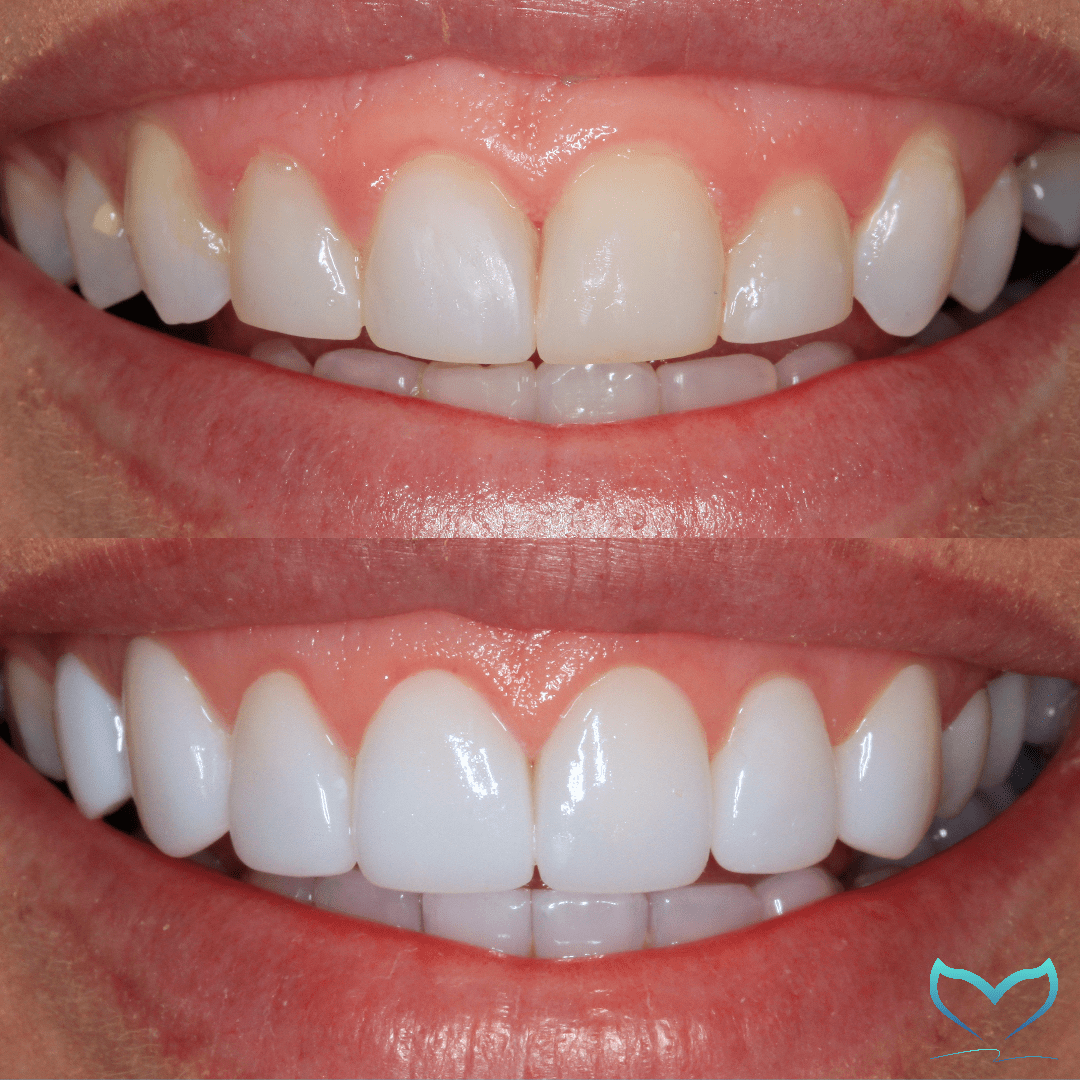
Making the Right Choice: Composite Veneers vs Porcelain Veneers
The decision between composite veneers vs porcelain veneers ultimately depends on individual needs, preferences, and circumstances. Here are some factors to consider when making your choice:
- Budget: If cost is a primary concern, composite veneers are a more affordable option. However, it’s important to consider the long-term investment as porcelain veneers tend to last longer and may not need to be replaced as frequently.
- Aesthetic Goals: For those seeking the most natural and aesthetically pleasing results, porcelain veneers are often the better choice due to their superior translucency and luster. If you are looking for a quick improvement and are satisfied with a slightly less natural look, composite veneers can still provide excellent results.
- Time Constraints: If you need a fast solution, composite veneers can be completed in a single visit, making them a convenient option. Porcelain veneers require more time, including multiple visits and a waiting period for fabrication.
- Tooth Preservation: If preserving the natural tooth structure is important to you, composite veneers are less invasive and require minimal enamel removal. Porcelain veneers require more extensive preparation.
- Longevity and Durability: If you are looking for a long-lasting solution and are willing to invest in higher quality, porcelain veneers are more durable and resistant to staining. Composite veneers, while more affordable, will need to be replaced more frequently and are more susceptible to damage.
- Repairability: If you are concerned about the potential for damage and the ease of repair, composite veneers offer more flexibility. Porcelain veneers, while durable, are not easily repaired and typically need to be replaced if damaged.
Conclusion
In the debate between composite veneers vs porcelain veneers, there is no one-size-fits-all answer. Both types of veneers offer unique advantages and potential drawbacks. Composite veneers are a cost-effective, quick, and minimally invasive option, while porcelain veneers offer superior aesthetics, durability, and stain resistance.
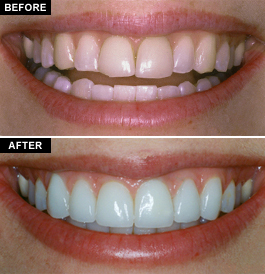
Which is Better: Porcelain or Composite Veneers?
The question of whether porcelain or composite veneers are better depends largely on the individual patient’s needs, preferences, and circumstances. Here are some key points to consider:
- Aesthetics: Porcelain veneers are known for their superior aesthetic qualities. They mimic the natural translucency and luster of tooth enamel more effectively than composite veneers. This makes them ideal for patients who prioritize achieving the most natural-looking smile.
- Durability: Porcelain veneers are more durable than composite veneers. They are resistant to chipping, cracking, and staining, often lasting 10-15 years or more with proper care. Composite veneers, while still durable, typically last around 5-7 years and are more prone to damage and discoloration over time.
- Cost: Composite veneers are generally more affordable than porcelain veneers. For patients on a budget, composite veneers can provide a cost-effective solution for improving the appearance of their smile.
- Procedure Time: Composite veneers can usually be applied in a single visit, making them a convenient option for those with time constraints. Porcelain veneers require multiple visits, including time for custom fabrication in a dental lab.
- Invasiveness: The application of composite veneers is less invasive, often requiring minimal to no removal of tooth enamel. Porcelain veneers require more extensive preparation, involving the removal of a thin layer of enamel.
- Reparability: If composite veneers become damaged, they can often be repaired directly on the tooth without needing to replace the entire veneer. Porcelain veneers, while more durable, are not easily repaired and typically need to be replaced if damaged.
In summary, porcelain veneers are generally considered the superior option in terms of aesthetics and durability, but they come at a higher cost and require a more invasive procedure. Composite veneers, on the other hand, offer a more affordable and less invasive solution, with the trade-off being reduced longevity and durability.
Which is Better: Porcelain Veneers or Composite Bonding?
Porcelain veneers and composite bonding are two popular cosmetic dental procedures, each with its own set of benefits and limitations. Here is a detailed comparison to help determine which might be better for you:
- Aesthetic Quality: Porcelain veneers offer the highest aesthetic quality. They provide a natural, translucent appearance that closely mimics natural tooth enamel. Composite bonding, while still capable of producing good aesthetic results, typically lacks the same level of translucency and shine.
- Durability: Porcelain veneers are more durable and resistant to staining compared to composite bonding. They can last 10-15 years or more with proper care. Composite bonding, on the other hand, usually lasts around 5-7 years and is more susceptible to chipping and staining.
- Procedure: Composite bonding is a quicker and simpler procedure, often completed in a single visit. It involves applying a tooth-colored resin directly to the tooth and shaping it to the desired form. Porcelain veneers require multiple visits, including the preparation of the teeth and the custom fabrication of the veneers in a dental lab.
- Cost: Composite bonding is generally more affordable than porcelain veneers. The lower cost makes it an attractive option for patients looking for a more budget-friendly solution.
- Invasiveness: Composite bonding is less invasive, typically requiring minimal to no removal of the tooth structure. Porcelain veneers require the removal of a thin layer of enamel to ensure proper fit and appearance.
- Reparability: Composite bonding is easier to repair if it becomes chipped or damaged. The dentist can add more resin to fix the issue. Porcelain veneers, while more durable, are not easily repaired and usually need to be replaced if damaged.
In summary, porcelain veneers are the better option for patients seeking the highest quality and most durable aesthetic results. Composite bonding is a more affordable and less invasive alternative that still provides good results, though it may require more frequent maintenance and repairs.
What Are the Disadvantages of Composite Veneers?
While composite veneers offer several advantages, including affordability and a less invasive procedure, there are also some notable disadvantages to consider:
- Durability: Composite veneers are not as durable as porcelain veneers. They are more prone to chipping, cracking, and wear over time, often needing replacement after 5-7 years.
- Staining: Composite resin is more susceptible to staining from food, beverages, and smoking. Over time, composite veneers can become discolored, especially if the patient consumes a lot of staining substances like coffee, tea, red wine, or tobacco.
- Aesthetic Limitations: While composite veneers can look very natural, they do not achieve the same level of translucency and shine as porcelain veneers. This can result in a slightly less natural appearance.
- Maintenance: Composite veneers require more maintenance to keep them looking their best. Regular polishing by a dentist may be necessary to maintain their appearance.
- Longevity: Composite veneers have a shorter lifespan compared to porcelain veneers. They typically last between 5-7 years, while porcelain veneers can last 10-15 years or more with proper care.
- Reparability: Although composite veneers can be repaired if damaged, frequent repairs can be inconvenient and add to the overall cost over time.
In summary, the main disadvantages of composite veneers include their reduced durability, susceptibility to staining, and the potential for a less natural appearance compared to porcelain veneers. However, their affordability and less invasive application make them a viable option for many patients.
What’s More Expensive: Porcelain or Composite Veneers?
Porcelain veneers are generally more expensive than composite veneers. Here are some reasons for the cost difference:
- Material Costs: Porcelain is a high-quality, durable material that closely mimics the natural appearance of tooth enamel. The cost of the raw material is higher than that of composite resin.
- Fabrication Process: Porcelain veneers are custom-made in a dental laboratory. This process involves skilled technicians and specialized equipment, contributing to the higher cost. Composite veneers are applied directly to the teeth and shaped by the dentist, which reduces lab-related expenses.
- Durability and Longevity: Porcelain veneers are more durable and can last 10-15 years or more with proper care. This longevity is reflected in their higher price. Composite veneers, while less expensive initially, have a shorter lifespan of around 5-7 years, potentially leading to more frequent replacements.
- Aesthetic Quality: Porcelain veneers offer superior aesthetic results, with better translucency and a more natural-looking finish. This higher quality is another factor contributing to their increased cost.
- Procedure Complexity: The application of porcelain veneers involves a more complex and time-consuming procedure, including tooth preparation, impressions, temporary veneers, and final placement. Composite veneers are typically applied in a single visit, making the procedure less complex and less costly.
In summary, while porcelain veneers are more expensive than composite veneers, their superior durability, aesthetic quality, and longer lifespan can make them a worthwhile investment for many patients.
Which Veneers Look More Natural?
Porcelain veneers are generally considered to look more natural compared to composite veneers. Here’s why:
- Translucency: Porcelain has a natural translucency that closely mimics the light-reflecting properties of natural tooth enamel. This allows porcelain veneers to blend seamlessly with the surrounding teeth and appear more natural.
- Luster: The surface of porcelain veneers has a high-gloss finish that gives them a shiny, enamel-like appearance. This luster is difficult to achieve with composite resin.
- Color Stability: Porcelain veneers maintain their color over time and are highly resistant to staining. This ensures that they continue to look natural and bright for many years. Composite veneers, on the other hand, can stain and discolor over time.
- Customization: Porcelain veneers are custom-made in a dental lab to match the exact color, shape, and size of your natural teeth. This level of customization ensures a more precise and natural-looking result.
- Surface Texture: The smooth surface of porcelain veneers mimics the texture of natural tooth enamel, adding to their natural appearance. Composite veneers can be polished to a smooth finish but may not achieve the same level of texture and shine as porcelain.
In summary, porcelain veneers are preferred for their ability to create the most natural and aesthetically pleasing results. Their translucency, luster, color stability, and customization make them the top choice for patients seeking a natural-looking smile.
Which Type of Veneers Are the Best?
The “best” type of veneers depends on various factors, including the patient’s needs, budget, and preferences. Here is a comparison of the different types of veneers:
- Porcelain Veneers: These are often considered the best for their superior aesthetics, durability, and longevity. They offer a natural, translucent appearance and are resistant to staining. Porcelain veneers are ideal for patients who prioritize the highest quality and are willing to invest in a long-lasting solution.
- Composite Veneers: These are a more affordable and less invasive option. They can be applied in a single visit and require minimal tooth preparation. While not as durable or natural-looking as porcelain veneers, composite veneers are a good choice for patients looking for a budget-friendly and quick solution.
- Lumineers: A brand of ultra-thin porcelain veneers, Lumineers require little to no tooth preparation. They offer a less invasive option with the aesthetic benefits of porcelain. However, they may not be suitable for all patients, especially those with significant tooth shape problems.
Do Composite Veneers Look Natural?
Composite veneers can look natural, but there are some limitations compared to porcelain veneers. Here’s an in-depth look at the factors that influence the natural appearance of composite veneers:
- Material Properties: Composite resin is designed to mimic the color and texture of natural teeth. When skillfully applied and polished, composite veneers can blend well with the surrounding teeth. However, they lack the translucency of porcelain, which means they might not achieve the same depth and lifelike appearance.
- Application Technique: The natural look of composite veneers largely depends on the dentist’s skill and experience. An experienced cosmetic dentist can layer and sculpt the resin to closely match the patient’s natural teeth. Proper shaping and polishing are crucial to achieving a natural appearance.
- Color Matching: Composite veneers can be color-matched to the patient’s natural teeth. This includes considering the underlying tooth color, as composite resin is more opaque than porcelain. Achieving a seamless match requires careful shade selection and blending.
- Surface Finish: The surface of composite veneers can be polished to a high gloss, which enhances their natural look. However, this finish may not be as long-lasting as the glaze on porcelain veneers, and regular maintenance may be required to keep them looking their best.
- Longevity of Appearance: Over time, composite veneers may lose their luster and become stained from food and beverages. This can affect their natural appearance and may require periodic polishing or touch-ups.
In summary, while composite veneers can look natural, they generally do not achieve the same level of realism as porcelain veneers. The expertise of the dentist and regular maintenance play significant roles in maintaining their natural appearance.
Which Type of Veneers Last Longer?
Porcelain veneers generally last longer than composite veneers. Here’s a detailed comparison:
- Durability: Porcelain is a very strong and durable material, capable of withstanding the forces of biting and chewing. Porcelain veneers are less likely to chip or crack compared to composite veneers. They are also highly resistant to staining from foods, beverages, and smoking.
- Lifespan: With proper care, porcelain veneers can last between 10 to 15 years, and in some cases, even longer. Composite veneers, on the other hand, typically last around 5 to 7 years. The shorter lifespan of composite veneers is due to their material properties, which make them more susceptible to wear and tear.
- Maintenance: Porcelain veneers require minimal maintenance beyond good oral hygiene practices and regular dental check-ups. Composite veneers, while also requiring good oral hygiene, may need periodic polishing and repairs due to their susceptibility to staining and chipping.
- Replacement: When porcelain veneers eventually need to be replaced, the process is straightforward, often involving the removal of the old veneers and placement of new ones. Composite veneers may require more frequent replacements due to their shorter lifespan.
In summary, porcelain veneers last longer and are more durable than composite veneers, making them a better long-term investment for patients seeking a lasting solution for their smile.
Do Teeth Decay Under Composite Veneers?
Teeth can decay under composite veneers if proper oral hygiene is not maintained. Here’s a detailed explanation:
- Veneer Placement: Composite veneers are bonded directly to the tooth surface. The bond between the tooth and the veneer should be tight and seamless, reducing the risk of decay. However, if the bonding process is not done correctly, gaps or edges can create areas where bacteria can accumulate, leading to decay.
- Oral Hygiene: Good oral hygiene practices are essential to prevent decay under composite veneers. This includes regular brushing, flossing, and dental check-ups. Poor oral hygiene can lead to plaque buildup around the veneers, increasing the risk of decay.
- Diet and Habits: Consuming sugary foods and drinks, or failing to maintain a balanced diet, can contribute to tooth decay. Habits such as smoking can also increase the risk of decay by promoting plaque and tartar buildup.
- Regular Dental Visits: Regular visits to the dentist allow for professional cleanings and early detection of potential issues. Dentists can identify areas of concern and take preventive measures to protect the teeth and veneers.
- Bonding and Margins: The quality of the bonding and the margins of the veneers play a significant role in preventing decay. Well-fitted veneers with smooth margins reduce the risk of bacterial infiltration and decay.
In summary, while teeth can decay under composite veneers if oral hygiene is neglected, maintaining good dental care practices can significantly reduce this risk.
Does Removing Composite Veneers Damage Teeth?
Removing composite veneers can potentially damage the teeth, but careful and skilled dental techniques can minimize this risk. Here’s a detailed look at the process and its implications:
- Removal Process: Composite veneers are bonded to the tooth surface using a strong dental adhesive. Removing them involves carefully breaking this bond without damaging the underlying tooth structure. Dentists use specialized tools and techniques to gently remove the composite material.
- Tooth Preparation: Composite veneers often require minimal preparation of the natural tooth compared to porcelain veneers. This means less enamel is removed initially, and there may be less risk of damage during removal. However, some enamel alteration is still necessary, which can affect the tooth’s integrity.
- Potential Damage: If the removal process is not done carefully, there is a risk of removing too much enamel or causing micro-cracks in the tooth. This can increase sensitivity and the risk of future decay or damage.
- Skill and Experience: The skill and experience of the dentist play a crucial role in safely removing composite veneers. An experienced dentist will use precise techniques to minimize any potential damage to the teeth.
- Aftercare: After removing composite veneers, the teeth may need some restoration, such as polishing or minor repairs, to restore their natural appearance and function.
In summary, while there is a potential for damage when removing composite veneers, skilled dental professionals can minimize this risk. It’s essential to choose an experienced dentist for both the placement and removal of veneers.
Is It Hard to Eat with Composite Veneers?
Eating with composite veneers is generally not hard, but there are some considerations to keep in mind:
- Initial Adjustment: After getting composite veneers, there may be a short adjustment period as you get used to the new feel of your teeth. This is usually brief, and most patients adapt quickly.
- Biting and Chewing: Composite veneers are designed to be strong and durable, allowing you to bite and chew most foods without difficulty. However, they are not as strong as natural enamel or porcelain veneers, so it’s advisable to avoid biting into very hard foods, such as ice or hard candies, to prevent chipping.
- Staining Foods: Composite veneers are more susceptible to staining compared to porcelain. It’s a good idea to limit consumption of foods and beverages that can cause staining, such as coffee, tea, red wine, and berries, or to brush your teeth soon after consuming these items.
- Sticky and Hard Foods: Avoiding very sticky or hard foods can help extend the life of your composite veneers. Sticky foods like caramels or hard foods like nuts can put extra stress on the veneers and increase the risk of damage.
- Regular Care: Maintaining good oral hygiene is crucial. Regular brushing and flossing help keep your veneers and natural teeth in good condition, ensuring you can eat comfortably and maintain a healthy smile.
In summary, eating with composite veneers is generally straightforward, but some precautions should be taken to avoid damaging the veneers and to keep them looking their best.
Should I Get Composite or Porcelain Veneers?
Deciding between composite and porcelain veneers depends on several factors. Here’s an in-depth look at considerations to help you make an informed decision:
- Aesthetic Goals: If achieving the most natural and aesthetically pleasing result is your top priority, porcelain veneers are generally the better choice. They offer superior translucency and shine, closely mimicking the natural appearance of tooth enamel.
- Budget: Composite veneers are more affordable than porcelain veneers. If cost is a significant factor, composite veneers provide a budget-friendly option while still offering good cosmetic improvements.
- Durability: Porcelain veneers are more durable and long-lasting than composite veneers. They can last 10-15 years or more with proper care, whereas composite veneers typically last 5-7 years. If you’re looking for a long-term solution, porcelain veneers are the better investment.
- Procedure Time: Composite veneers can usually be applied in a single visit, making them a convenient option for those with time constraints. Porcelain veneers require multiple visits, including time for custom fabrication in a dental lab.
- Invasiveness: Composite veneers are less invasive and require minimal tooth preparation. Porcelain veneers involve more extensive preparation, including the removal of a thin layer of enamel.
- Maintenance: Composite veneers may require more maintenance, including regular polishing to maintain their appearance. Porcelain veneers are more resistant to staining and generally require less maintenance.
- Reparability: If composite veneers become damaged, they can often be repaired directly on the tooth. Porcelain veneers, while more durable, typically need to be replaced if they are chipped or cracked.
In summary, if you prioritize aesthetics and durability and are willing to invest in a long-lasting solution, porcelain veneers are the better choice. If you are looking for a more affordable, less invasive option with quicker results, composite veneers may be more suitable.
Do Composite Veneers Require Shaving Teeth?
Composite veneers generally require minimal to no shaving of the teeth compared to porcelain veneers. Here’s an explanation:
- Minimal Preparation: One of the advantages of composite veneers is that they typically require minimal tooth preparation. In many cases, the dentist can apply the composite resin directly to the surface of the tooth without removing much, if any, enamel.
- Bonding Process: Composite veneers involve layering the resin onto the tooth surface and shaping it to achieve the desired appearance. This process usually does not require significant alteration of the tooth structure.
- Less Invasive: Because composite veneers involve less removal of tooth enamel, they are considered a less invasive option compared to porcelain veneers, which often require more extensive tooth preparation.
- Enamel Preservation: Preserving the enamel is beneficial for the long-term health of the tooth. Minimal preparation means that the natural tooth structure is largely retained, which can reduce the risk of sensitivity and other issues.
In summary, composite veneers typically require minimal shaving of the teeth, making them a less invasive option compared to porcelain veneers.
What Is Better Than Porcelain Veneers?
While porcelain veneers are highly regarded for their aesthetic and durable qualities, there are other options that some patients might consider as alternatives depending on their specific needs:
- Lumineers: These are a brand of ultra-thin porcelain veneers that require little to no tooth preparation. Lumineers can be a better option for patients looking for a less invasive alternative to traditional porcelain veneers.
- Dental Crowns: For teeth that are significantly damaged or decayed, dental crowns may be a better option. Crowns cover the entire tooth, providing strength and protection while also improving appearance.
- Orthodontics: For patients with misaligned teeth, orthodontic treatment such as braces or clear aligners (e.g., Invisalign) may be a better long-term solution. Orthodontics can correct alignment and bite issues, providing both functional and aesthetic benefits.
- Teeth Whitening: For patients primarily concerned with discoloration, professional teeth whitening might be a simpler and less invasive option than veneers. Whitening can significantly improve the appearance of natural teeth without altering their structure.
- Bonding and Contouring: Dental bonding and contouring can be used to make minor cosmetic improvements to the teeth. This procedure involves applying composite resin to the teeth and shaping them to improve their appearance.
- Implants: For missing or severely damaged teeth, dental implants are a highly effective and permanent solution. Implants provide both functional and aesthetic benefits by replacing the entire tooth structure.
In summary, while porcelain veneers are an excellent choice for many patients, alternatives such as Lumineers, dental crowns, orthodontics, teeth whitening, bonding, and implants might be better options depending on the individual’s specific dental needs and goals. Consulting with a qualified dentist can help determine the most suitable treatment.

